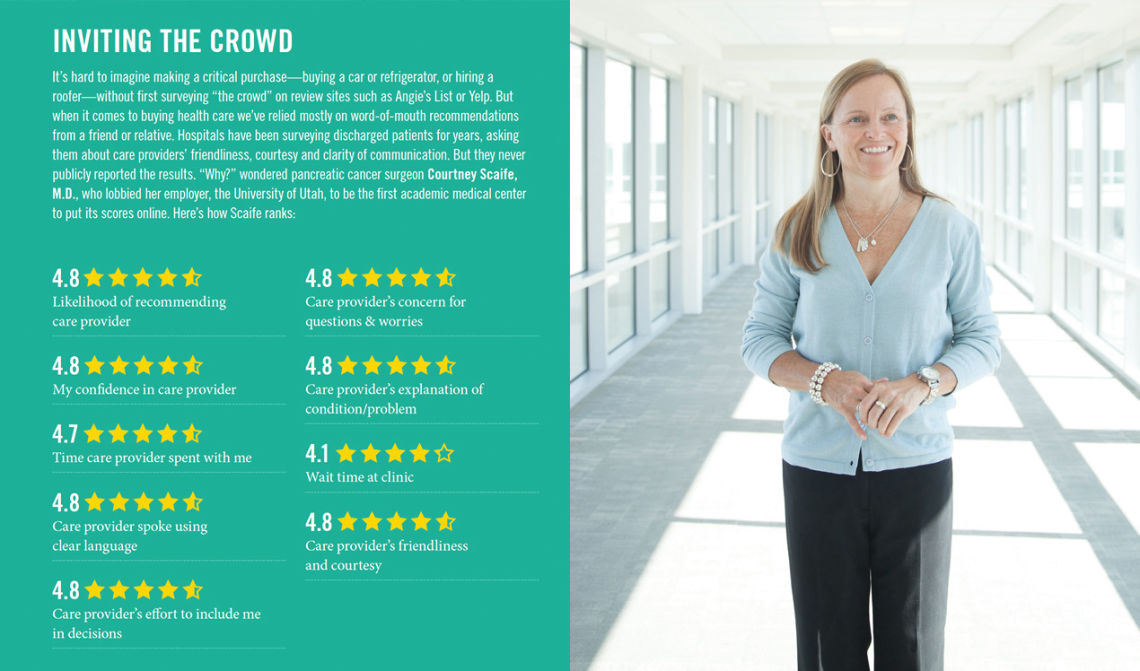e’ve gotten a lot of attention for being the first health care system in the country to publish patient comments on our “Find a Doctor” webpages. Much of the attention has focused on what physicians think, or what leaders can do to prepare their system to be more transparent. For us, publishing patient comments on our website was and is more than a marketing or improvement strategy. It is about our system’s relationship with patients. We value what patients think and say about their care.
We added “service” to our value equation because we believe that care isn’t great unless the patient thinks it is. We think that patients want to be more engaged and empowered in choosing the health care that is right for them, and we manifest that belief by posting the good, the bad, and the ugly to our website. For the record, it's mostly good, and we remove anything that reveals patient information, uses profane language, or isn’t about the doctor.
We’re nearly four years in to publishing comments and it's been mostly smooth. Not one doctor has demanded that their comments or ratings be removed from their profile. Publishing comments has prompted new conversations: What is the role of patients in their own care? What information is helpful for patients? How are patient expectations changing? What does “quality care” mean to patients? We think these conversations are good for our organization and will continue to keep us centered.
The following is a list of articles and interest nationally in our experience with online reviews.
Article:
Lee, VS. "Why Doctors Shouldn't Be Afraid of Online Reviews" Harvard Business Review [Boston]. 29 March 2016.
Peer Review:
Lee, VS et al. Creating the Exceptional Patient Experience in One Academic Health System. Academic Medicine 2016;91(3):338-344.
Article:
"Transparency: Will It Help Or Harm Health Care?" University of Utah's Algorithms for Innovation. Algorithm 3, 2015.
Video:
"Why Online Doctor Reviews are Good Medicine: Tom Lee Makes the Case For Transparency" University of Utah's Algorithms for Innovation. Innovation Blog, 16 July 2014.
Mari Ransco
Health care is full of high emotion—especially right now. Thankfully, there’s a simple framework we can follow to de-escalate with compassion. Hospitalist and UACT co-director Claire Ciarkowski introduces NURSE: a simple mnemonic for responding with empathy.
University of Utah Health’s director of patient experience Mari Ransco examines the pandemic patient experience through the lens of the 5 Elements: U of U Health’s qualitative model for delivering an exceptional patient experience.
From pediatrics to palliative care, a common thread runs through physician Joan Sheetz’s career: effective communication. That explains how she ended up co-directing UACT — Utah Advanced Communication Training that focuses on tools to enhance patient and peer interactions.
